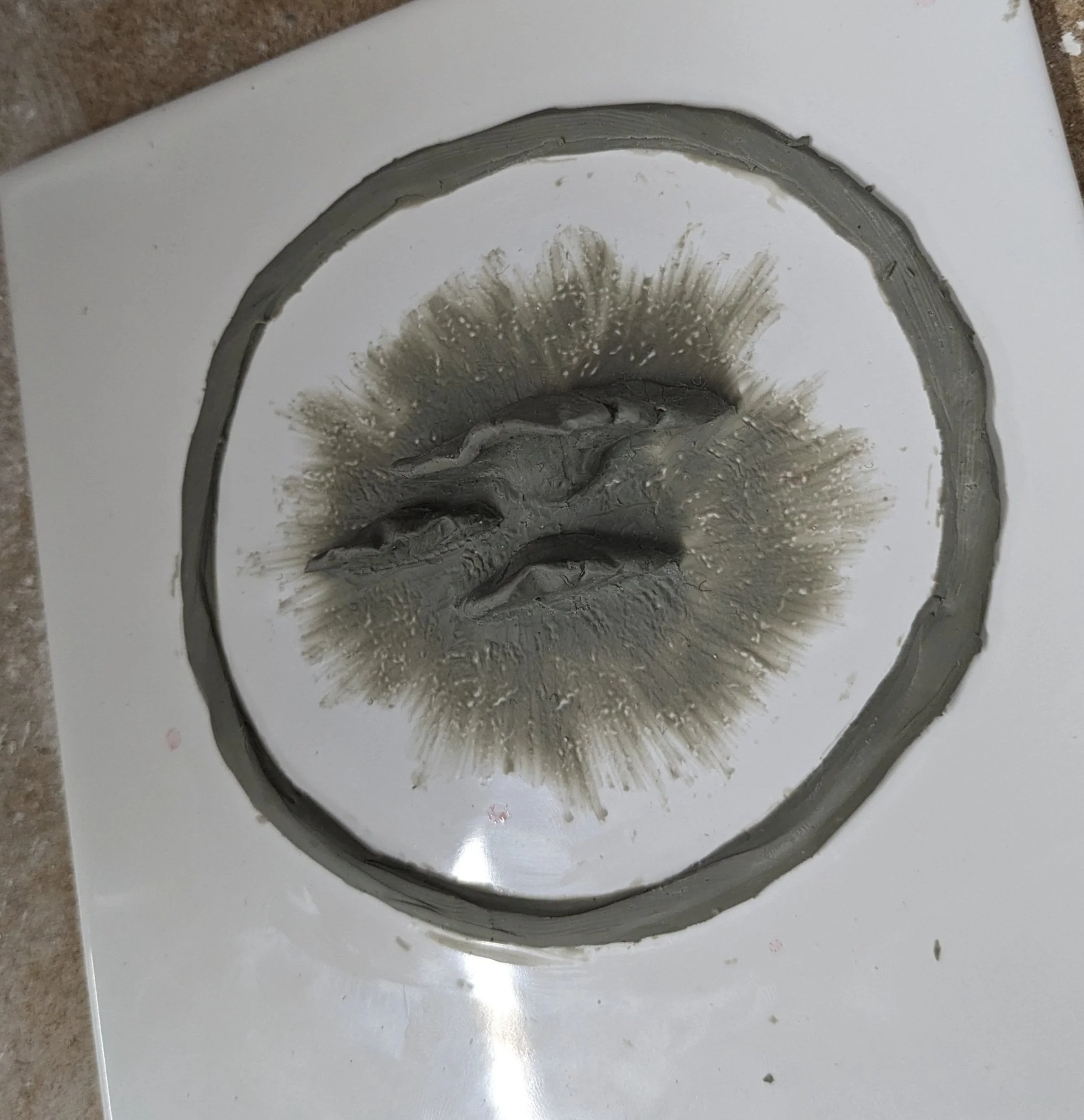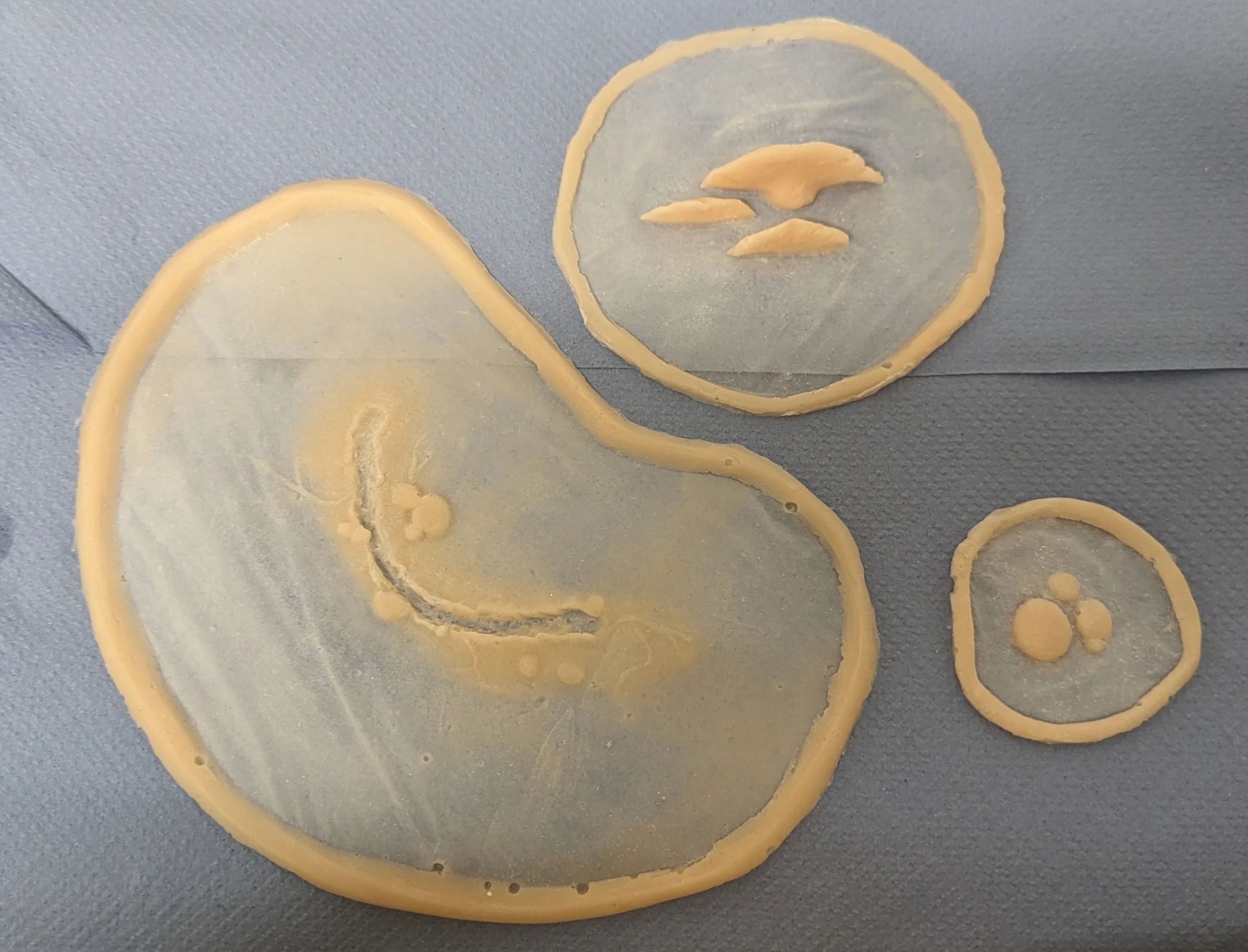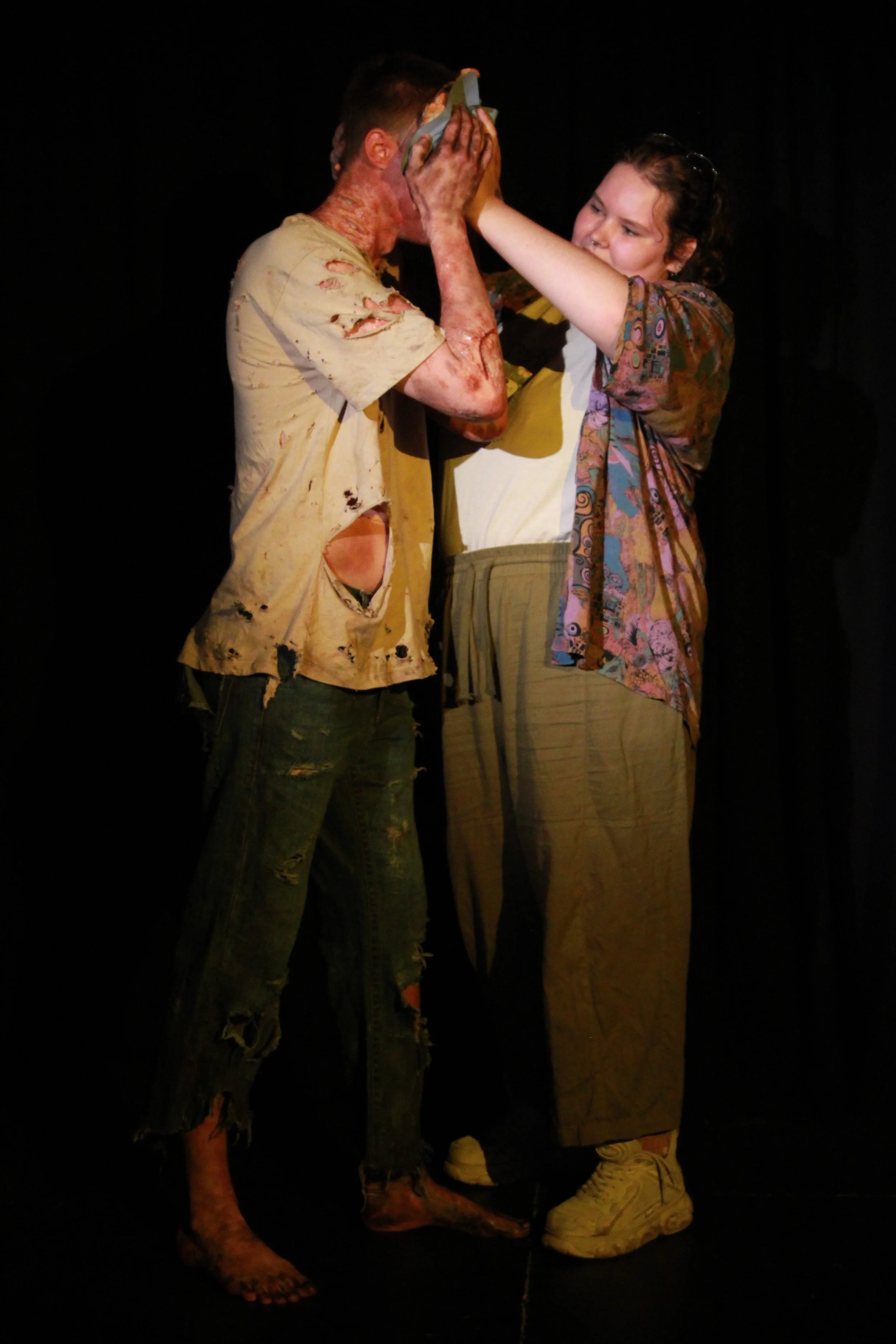Prosthetic Skills
Crafting prosthetic makeup for horror ignites my passion for creativity and storytelling. It's a thrilling process of sculpting, mould making and painting.
Here are some examples of my work and processes for making prosthetics.

Sculpted with chavant clay on plaster head cast

Fresh out of the mould

Pre painted with alcohol paints

Final look once applied
Creature effects prosthetics
Sculpting the prosthetics shape with oil based chavant clay, sculpted onto a porcelain tile.
The silicone moulds ready for casting in silicone.
There is a set of clear moulds as I duplicated these moulds in a different silicone.
Airbrushing 12-15 thin layers of cap plastic to the moulds.
Filling the moulds with the pigmented silicone and scraping off the excess.
Final Prosthetics
The platsil silicone prosthetics once out of the mould with the edges trimmed.
The silicone prosthetics whilst being applied using the adhesive pros-aid. Melting the Cap-plastic using alcohol.
Prosthetics and makeup application
Time-lapse from beginning until body makeup was finished. This process took around 4.5 hours. Due to the fact that this look required full body paint on all visible skin, I decided it would be best to have another person apply makeup alongside me, as this would cut down on application time.
As our model would be blind once the face was attached, I thought it would be best to apply last and where he would be standing for photos to help him know where he was in the room.
Detail shots
Close-up detail images, including my prosthetics and the makeup!
The makeup used for the photo shoot was almost exclusively alcohol-based paints; for the additional texture on the model's skin, we used silicone skin sculpt.








